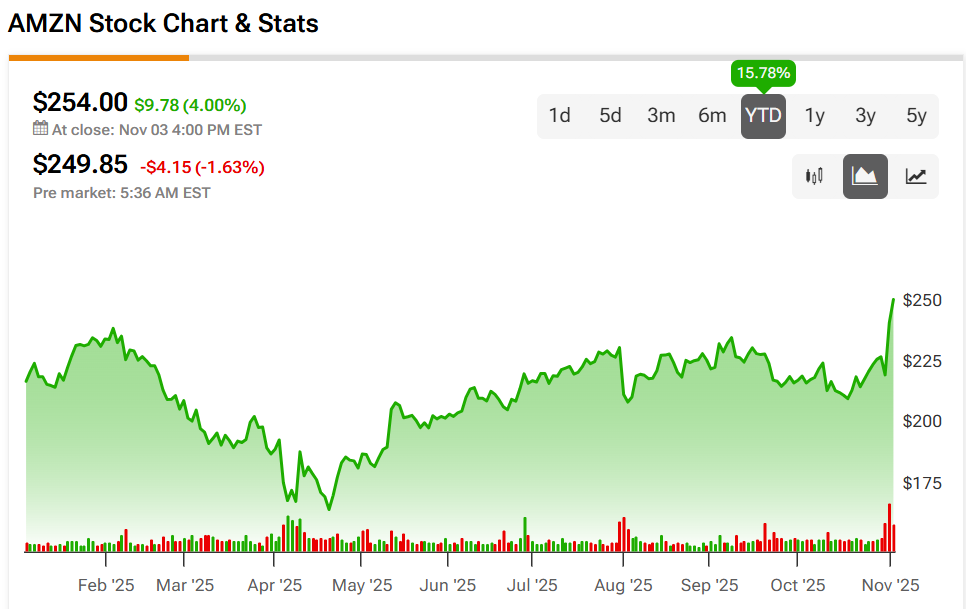Amazon (AMZN) has accused a Berkshire Hathaway (BRK.A) utility of failing to supply enough electricity for four new data centers in Oregon. The complaint, filed with the Public Utility Commission of Oregon, claims that PacifiCorp did not meet its commitments to provide power first agreed to in 2021. According to Bloomberg, one data campus received too little power, another received none, and two others have been delayed because the utility has not completed its usual contracting process. PacifiCorp has not commented on the claim.
Elevate Your Investing Strategy:
- Take advantage of TipRanks Premium at 50% off! Unlock powerful investing tools, advanced data, and expert analyst insights to help you invest with confidence.
These facilities are part of Amazon’s effort to expand its cloud and AI computing network. However, the dispute highlights a growing problem across the U.S. As more companies build large data centers, many utilities are struggling to deliver the electricity they need.
Meanwhile, AMZN shares rose 4% on Monday to close at $254.

Growing Energy Demand from Data Centers
AI has pushed power demand to new highs. A Goldman Sachs (GS) research report in September warns that global data centers could use up to 4% of all electricity by 2030, compared to about 1% to 2% in 2023. In the U.S., data centers already account for about 4% of electricity use, and that share could climb above 8% by the end of the decade.
At the same time, the type of technology used inside these centers is changing. Servers that run AI models need specialized graphics chips, which consume far more power than older systems. Goldman Sachs estimates that a single rack of AI servers could draw enough energy to power about 500 U.S. homes. As a result, many companies are building new facilities rather than upgrading existing ones.
According to Goldman Sachs, data centers now use around 62 gigawatts of power. Cloud services make up 58% of that total, traditional workloads 31%, and AI about 13%. By 2027, AI could reach 28% of the total. The firm also projects that capital spending by the five largest U.S. technology companies – Amazon, Microsoft (MSFT), Alphabet (GOOGL) (GOOG), Meta Platforms (META), and Apple (AAPL) – will reach $736 billion across 2025 and 2026, up from $132 billion in 2023.
Investment and Infrastructure Outlook
The Amazon dispute shows how demand is moving faster than the electric grid can expand. While new construction is rising, utilities often need years to add capacity. In many regions, limits on transmission lines and power generation are now delaying large-scale data projects.
For investors, this creates both opportunity and risk. Utilities and grid technology companies could see stronger demand as AI adoption grows. However, analysts also note that higher power costs or slower infrastructure upgrades could weigh on big technology firms’ margins.
Goldman Sachs adds that global data centers could become one of the top ten electricity consumers by 2030. The firm cautions that the return on these massive investments will depend on how quickly AI delivers real business gains. For now, Amazon’s case in Oregon signals that the race to build more data capacity may soon depend as much on energy as on computing power.
Is Amazon Stock a Buy, Sell, or Hold?
Turning to the Street, Amazon continues to have the analysts’ backing with a Strong Buy consensus rating. The average AMZN stock price target is $295.62, implying a 16.39% upside from the current price.

















